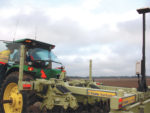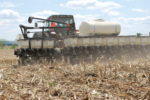Advertise Follow Us
Articles Tagged with ''compaction''
Injecting manure into strips allows more efficient use of manure, increases yields and creates a positive public perception of farmers
Read More
Keep Yields From Cooling Off
Cover crops can offset the major causes of yield drag in fields making the transition to no-till and improve the soil biology of fields lacking crop and residue diversity
Read More
Be Precise Where It Matters
Implement guidance, steering systems more accurately place seed and reduce guess rows by ensuring seed is precisely placed
Building Spring Strips When It Didn’t Get Done
If a late harvest didn’t allow you to strip-till last fall, making shallower berms and splitting fertilizer this spring can help you stay on track
Read More
Cutting-Edge Planting And Seeding Equipment
Options, flexibility and precision are hallmarks of the new planters and drills unveiled at the 2009 Farm Progress and Big Iron shows
Read More
Cover Crops Make Long-Term No-Till Perform Even Better
Iowa no-tiller drills cereal rye as soon as possible after harvesting corn and soybeans for maximum growth and better soil structure
Read More
Harvest Ruts, Compaction Leave No-Tillers With Questions
Long-term no-till fields may recover through natural means, and tillage may set back those all-important macropores a few years
Read More
Liquid Manure, No-Till Don’t Need To Clash
Dragline system and two lightweight application rigs help Indiana no-tiller incorporate manure.
Read More










